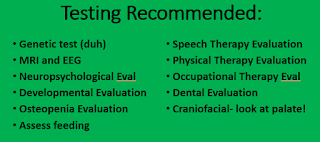2. A full-on sensory room. I'm talking platform swings, lycra hammocks, foam pits, rock walls and rope ladders, bins upon bins of sensory equipment, a jungle gym... It would be HEAVEN!!!!
 |
| Not even CLOSE to what I imagined! |
3. Training for ALL Chelsea's teachers, doctors, and therapists. Tailor her education for just her!
4. Books, books, books, and more books. All the Wrightslaw books, disability books, books on reading programs, OT and speech books, fun games for kid books, fun books to read with Chelsea, early books for her to start reading... Plus a library to fit it in.
5. Advocacy training for me! Plus training on just about every aspect of Chelsea's life! I just love going to conferences and workshops!!! (Can you tell I was a TOTAL nerd through all of school? I have fully embraced my identity!)
6. About a million dollars for Chelsea's therapy. Starting out, we paid about $2,000 per WORD worth of speech therapy. Who can say "OUCH!" like our bank account did? 😉
7. Color-coded binders, tab dividers, highlighters, sheet protectors... I just need a bottomless account at an office supply store! Hahaha, I have to go to different stores because I clean out their whole supply aisle!
8. 100 busy bags! I can't even express how much I love these!!! I want them all cute, engaging and fun for Chelsea, that also encourage skills like buttoning, drawing, cutting...
9. An uninterrupted nap. Just because that would ROCK!!! Any sleep is amazing! I think any parent can relate here! Guys, parenting is really, really tiring!!!



















































